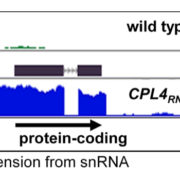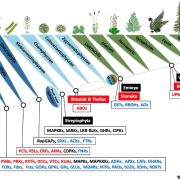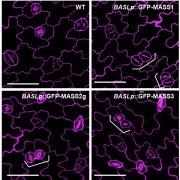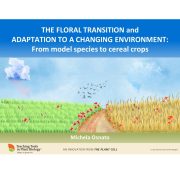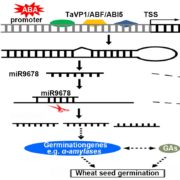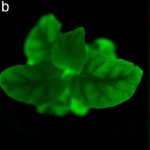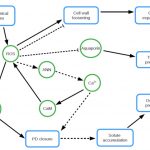Review. The development of the periderm: the final frontier between a plant and its environment (COPB)
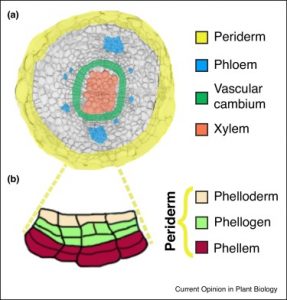 Campilho et al. have written an interesting review about the molecular basis of periderm development. During secondary growth (increase in girth) of most gymnosperms and dicots, the outer epidermal layer is gradually replaced by the periderm, which facilitates gas exchange and defense. Periderm is composed of three tissues: the phellogen (cork cambium), which generates the phellem (cork) and the phelloderm (cork parenchyma). Phellem (cork) cells are dead and their walls highly suberized, rendering the tissue an effective barrier. Through studies of Arabidopsis as well as woody species including cork oak, new insights have arisen into the origins of the periderm. Not unexpectedly, it shares many regulatory hubs with the vascular cambium, a similar meristematic tissue that lies internal to the periderm. In stems, periderm forms under the epidermis, whereas in roots it is derived from the pericycle cell layer. As the authors observe, given its importance in defense and as a source of cork and secondary metabolites, more research into the periderm is warranted. (Summary by Mary Williams) Curr. Opin. Plant Biol. 10.1016/j.pbi.2019.08.008
Campilho et al. have written an interesting review about the molecular basis of periderm development. During secondary growth (increase in girth) of most gymnosperms and dicots, the outer epidermal layer is gradually replaced by the periderm, which facilitates gas exchange and defense. Periderm is composed of three tissues: the phellogen (cork cambium), which generates the phellem (cork) and the phelloderm (cork parenchyma). Phellem (cork) cells are dead and their walls highly suberized, rendering the tissue an effective barrier. Through studies of Arabidopsis as well as woody species including cork oak, new insights have arisen into the origins of the periderm. Not unexpectedly, it shares many regulatory hubs with the vascular cambium, a similar meristematic tissue that lies internal to the periderm. In stems, periderm forms under the epidermis, whereas in roots it is derived from the pericycle cell layer. As the authors observe, given its importance in defense and as a source of cork and secondary metabolites, more research into the periderm is warranted. (Summary by Mary Williams) Curr. Opin. Plant Biol. 10.1016/j.pbi.2019.08.008


